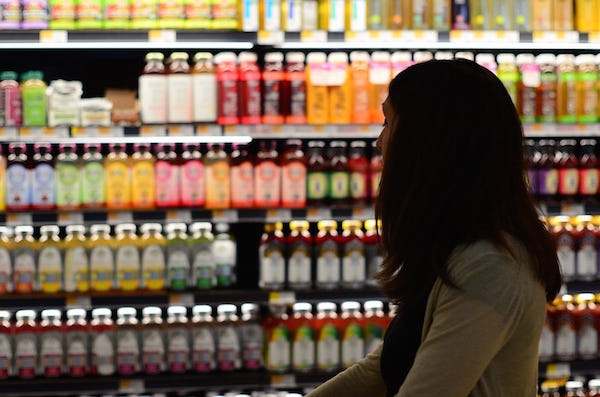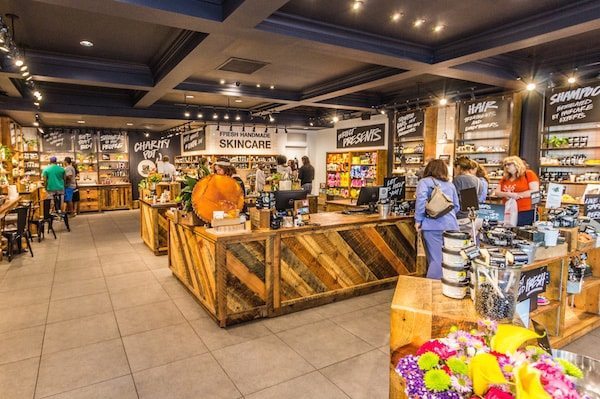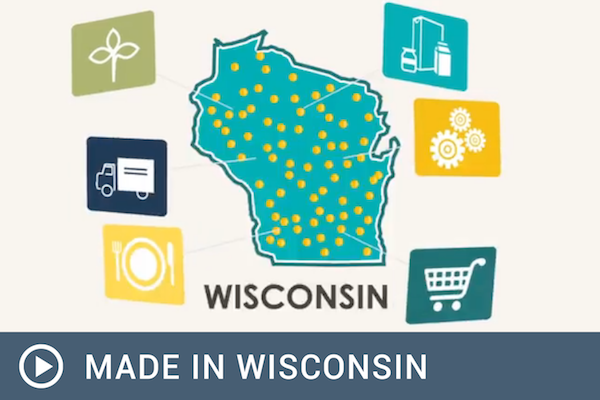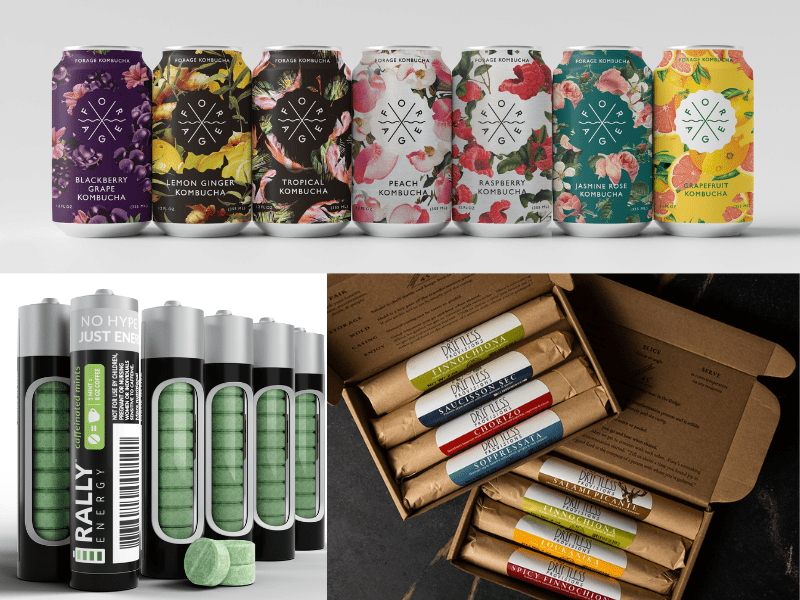[vc_row][vc_column][vc_column_text]Some entrepreneurs are uncomfortable with their business idea or product evolving as their business develops. However, most entrepreneurs start out trying to implement one idea, only to get feedback from consumers that the real business opportunity is in a different product, category or maybe even a different business model.
Change can be difficult. Sometimes being willing to change means giving up a pet brand name because a different one better identifies the product’s purpose and story. If the product doesn’t stand out on the shelf and speak to the right consumer, the business making that product will not make money. In that case, being willing to change can mean the difference between the business’ life and death.
This flexibility is important to surviving in today’s competitive marketplace. Consumers are demanding healthier, transparently sourced food and beverage options, and the details of those preferences are evolving at a rapid pace. This is why more large food and beverage companies are rapidly purchasing stakes in brands that have proven themselves by swiftly adapting to those changing preferences.
As entrepreneurs develop new products and new business models, they are constantly learning what works and what doesn’t through rigorous testing with their target consumer. In this sense, change doesn’t have to mean compromising core values but rather recognizing that there are multiple paths to achieving the business’ goals of profitability and impact.
We’ve said before that execution matters more than your big, brilliant idea. Part of executing is being willing to let the business change and evolve when it makes business sense. Sometimes that means killing your darlings.
And now, our roundup of the best food and beverage finance news, events and resources from around the web…
Business Model Insights
- Report: Shared-Use Kitchens Want Clear Definitions, Licensing (Project Nosh) – “One of the biggest things if you want to start a business is knowing that it’s going to cost money. A lot of people go into these shared use kitchens thinking that it is a free resource, but they need to remember that they are saving the money by not outfitting their own infrastructure or leasing their own facility. Shared-Use kitchens’ business models are to help leverage businesses, help them become more successful and then share in that growth together through providing ecosystem services. The food business’s success is the kitchen’s success.”
- 3 reasons to build good into your business model (New Hope Media)
- Exploring The Value-Added Business Strategy Of Pizza Farms (WisContext)
Raising Capital
- Why Food Startups Need to Keep Profitability in Mind Right Now (Project Nosh) – “If you think you’ll need to raise money in the next six months to three years (who knows when the next recession will occur), it’d be wise to steer your ship toward the land of fundamentals: really strong gross margins, an imminent path towards profitability, scalable operating expenses, and capital efficiency. Those are the attributes that early stage investors placed more value on in the last recession. Many companies are raising money at valuations they’ll have a hard time supporting in their next round of financing, especially if the next round is during a recession, but perhaps even if it isn’t. Other companies don’t think they’ll need to raise more money in the future. That sounds like a nice utopia, but it’s often not the case for fast-growing CPG brands.”
- What it takes to get funded in the Midwest (Venture Beat)
- 10 Things to Know Before Applying for a Restaurant SBA Loan (Foodstart)
CPG/National Brands
- What it means to build a brand (New Hope Media) – “The truth is that your brand isn’t just a logo. It’s not just a font. It’s not just a tagline or a mantra or a product or an audience. It’s all of those things and everything else, from your placement on the grocery shelf to your social media profile and even who your competitors are. Most importantly, it all has to work together, be cohesive and feel effortless/authentic. Just as much as a broken water pipe would be hard to ignore, your audience will instantly pick up on the inconsistencies of a brand.”
- Realigning for Growth: Win by Innovating across CPG Market Segments (IRi)
- Dreading your packaging redesign? Let joy spark the process (New Hope Media)
Market Trends
- Nielsen: Organic products are getting cheaper and more accessible (FoodDive) – “Eighty-eight percent of U.S. households purchased organic food and beverages in the last year, according to Nielsen. Organic product sales grew 9.8% and volume increased 11.4%. Despite the popularity of organic foods, they still only represent 5.3% of total retail food sales in the U.S. That percentage improves when looking at organic fruits and vegetables, which account for 15% of all the produce Americans eat.”
- The Grocery Industry Confronts a New Problem: Only 10% of Americans Love Cooking (Harvard Business Review)
- Study: Value, deals and coupons have strong influence on grocery purchases (FoodDive)
Farming and AgTech
- The 5 Food Production Risks Digital Ag Can Solve (AgFunder News) “Agtech is a risk management tool that’s relevant across the food chain, through the relationships between growers and processors, processors and retailers, retailers and consumers. Risk is about whether that which was promised will be delivered, and who bears that cost when it’s not. We’ve come to see the opportunities around digitizing agriculture as the strategic sharing of information between two parties to reduce risk, share risk, offload risk, or otherwise shift the division of costs and benefits in order to create a more functional food system.”
- Why small, local, organic farms aren’t the key to fixing our food system (Washington Post)
- AgriFood Tech Investing Report – MidYear 2017 (AgFunder)
Deals/M&A
- Low-Hanging Fruit Gone, Ag & Food Tech Investors Pay More for Deals (Xonomy) – “Though the dollars invested represent a 6 percent year-over-year increase, the total number of deals declined by 27 percent. Among the factors AgFunder cites for the decline are investor fatigue in “me-too” companies across the ag and food tech sector, as well as a fall off in seed-stage investments. Seed deals declined by 37 percent. Nonetheless, the dollar value of seed-stage deals is on the rise. AgFunder says the increase tracks with trends in global venture capital investments and could also mean that a lean startup model does not work for all startups in the sector.”
- Amazon’s Grocery Threat Could Ramp Up Food M&A (Bloomberg)
- Campbell Soup CEO: M&A to play ‘pivotal role’ in evolving product portfolio (FoodDive)
Industry Events
- Basic Food Safety (FaB Wisconsin) – $, 10/4 – 10/6 in Milwaukee, WI
- Business Planning Bootcamp (WWBIC) – $, 10/7 in Milwaukee, WI
- Quickbooks Level 1 (WWBIC) – $, 10/14 in Milwaukee, WI
- Advanced Food Safety (FaB Wisconsin) – $, 10/26 – 10/27 in Milwaukee, WI
- Rural Opportunity Initiative (ROI) and ISU Rural Investment Workshop – Free, 11/2 in Des Moines, IA. Rural ag-related businesses interested in attending can apply here.
- Nutrition Capital Network Fall Investor Meeting (NCN) – $, 11/14 – 11/15 in San Francisco, CA
[/vc_column_text][/vc_column][/vc_row]








